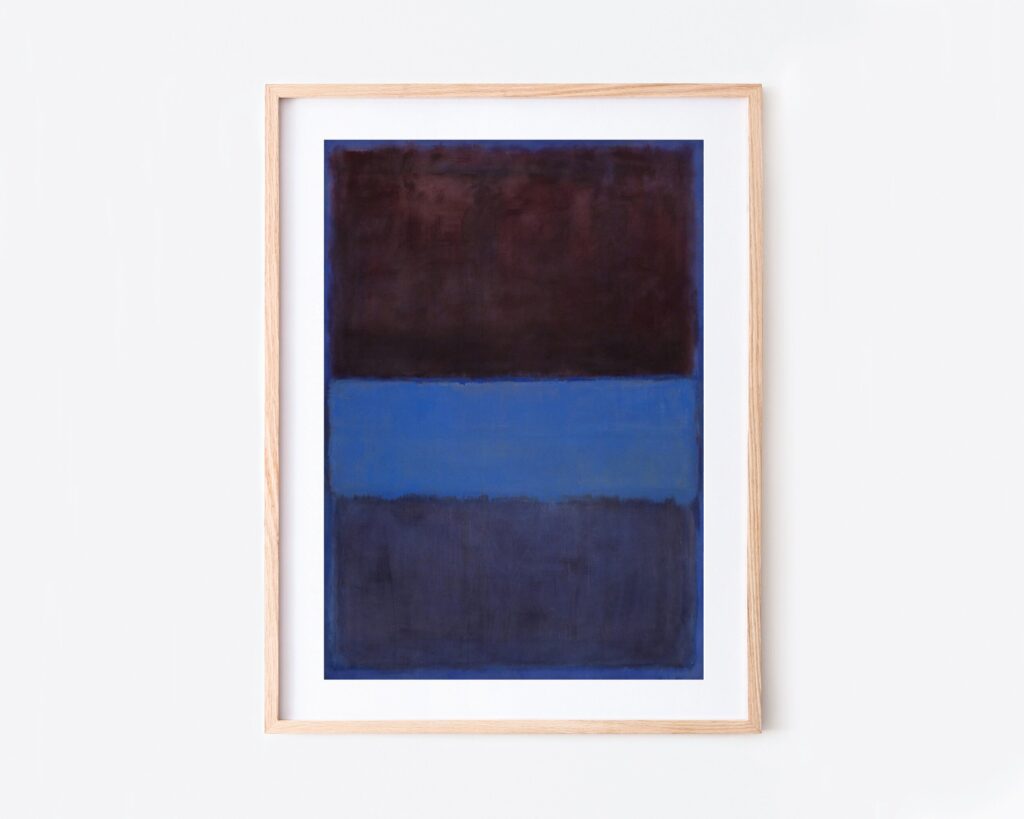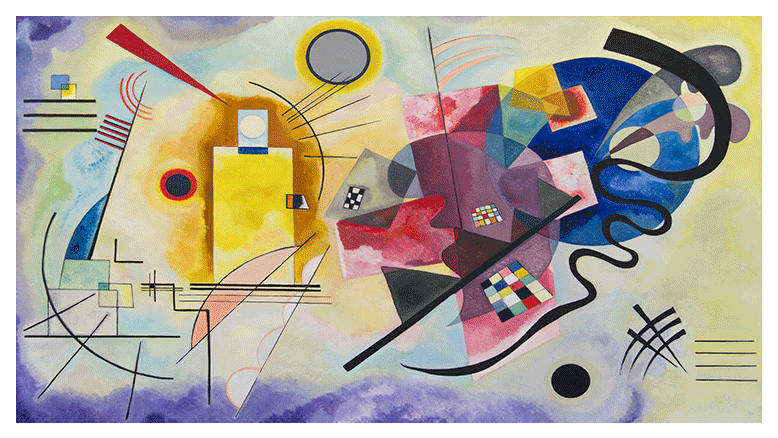Abstract Art is a creative interplay between the conscious and the unconscious, with the conscious mind making all the final decisions, and in control throughout.
– Lawren Harris.
WHAT IS ABSTRACT ART?
Abstract art is a style that moves away from realistic depictions of the visible world. Instead, it relies on lines, shapes, textures, colours, forms, and gestures to create impact. These elements work together to evoke emotions, convey ideas, or express concepts—often simplifying or distorting forms until they become entirely non-representational.
The art form is highly subjective, and its meaning can vary from person to person. Abstract artists often reject traditional artistic conventions and explore new ways of expressing themselves. They use unconventional materials or techniques to create their works. Today, abstract art is used in digital illustrations too. Similarly, art enthusiasts are encouraged to interpret such artwork based on their feelings, experiences, associations, and imaginations. It challenges viewers to engage with art in unconventional and thought-provoking ways. Its enduring impact on the art world is a testament to its ability to provoke thought, emotion, and a deeper connection between art and the viewer.
WHAT IS THE ABSTRACT ART MOVEMENT AND ITS ORIGIN?
The Abstract Art movement emerged in the late 19th and early 20th centuries as a response to the changing world and a desire to depart from traditional representational artistry.
Influential artists like Wassily Kandinsky, Kazimir Malevich, and Piet Mondrian played pivotal roles in the development of the movement. One of the early influences on the abstract art movement was a growing interest in spirituality and the search for profundity through artistry. For example, Wassily Kandinsky believed art could communicate spiritual and emotional experiences beyond the representations in the material world.
Then again, rapid technological and scientific advancements during this period, including innovations in photography, new materials, and techniques in painting, challenged many artists to explore alternative representations of reality. For instance, renowned artists like Paul Cézanne and Vincent van Gogh contributed to a shift in artistic thinking during the Post-Impressionism and Symbolism movements. It helped in paving the way for Abstract Art by emphasising emotional and symbolic aspects of traditional depictions.
However, the Cubist movement, led by Pablo Picasso and Georges Braque, also broke down objects into abstract and fragmented forms, shifting away from traditional representation and playing a pivotal role in this movement.
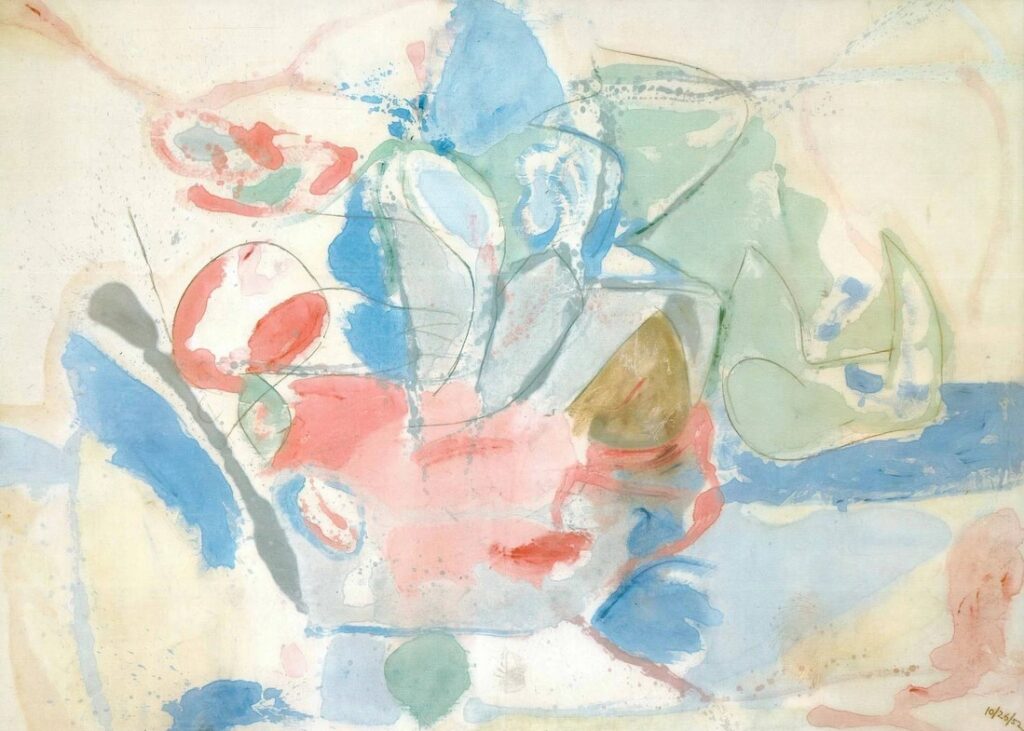
Abstract Art is not a singular or unified movement but embraces diverse styles and approaches. Some of its notable styles and art movements include Cubism, Futurism, Constructivism, Abstract Expressionism, Romanticism, Impressionism, and so on. These movements each brought unique interpretations and techniques to the rise of Abstract Art.
It continues to evolve, with contemporary artists pushing the boundaries of abstraction and experimenting with new materials, techniques, and concepts. It remains a significant and influential force in art history. However, today, we will discuss the artists who started the rise of the Abstract Art Movement and their notable works.
ABSTRACT ARTISTS AND THEIR FAMOUS ARTS
Throughout history, there have been numerous renowned artists, each contributing to the art movement with unique abstract styles and artistic innovations. However, this post discusses five famous abstract artists with notable works, now displayed in the world’s finest museums.
WASSILY KANDINSKY: COMPOSITION VII, 1913
The Russian painter Wassily Kandinsky is one of the most timeless legendary artists. Many consider him the leading pioneer of the Abstract movement. His nonrepresentational figures appear in most of his renowned paintings as geometric forms juxtaposed with shapes, hovering lines, and vibrant colours. And he believed in the power of the absolute necessity of abstract art.
Kandinsky initially studied law and economics. But he gave up academics and began painting studies at 30, which included figure or life drawing, sketching, and anatomy depictions. In the 1910s, he rose to prominence as a leading figure in the development of Modern Art. His artworks became the earliest examples of Abstract Art. Although Kandinsky explored figurative art before 1913, he is widely regarded as the first modern artist to fully embrace pure abstraction. Driven by an “inner necessity,” he believed in painting only what he genuinely felt in the moment, remaining detached from both recognisable and unrecognisable forms.
Kandinsky has produced several notable pieces throughout his career, with a few remaining particularly outstanding. These paintings include Untitled, the first watercolour from 1910, Farbstudie Quadrate from 1913, and On White II from 1923. However, Composition VII from 1913 has received tremendous recognition worldwide. It features a dynamic interplay of colourful geometric shapes, lines, and swirls. Kandinsky aimed to evoke emotions and spiritual connections through abstraction, making this work a landmark in the history of non-representational art.
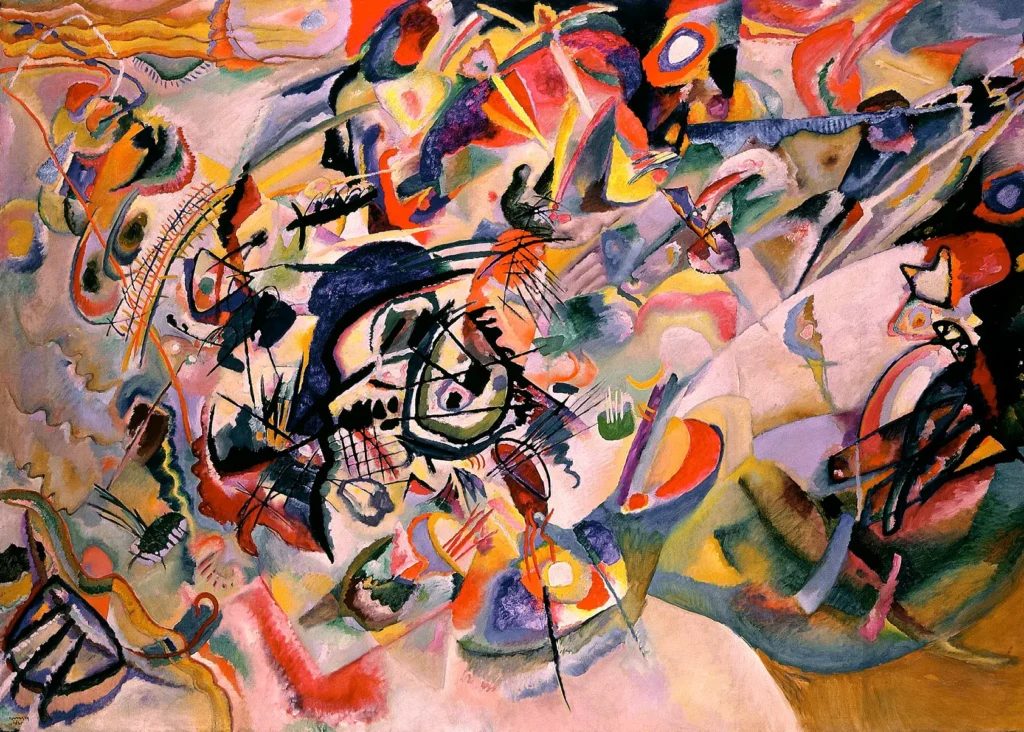
KAZIMIR MALEVIC: BLACK SQUARE, 1915
When considering influential abstract artists who have helped define the movement, Kazimir Malevich is a significant addition to the list. The Russian avant-garde painter and theorist rejected Kandinsky’s representational painting to develop modern abstract art in the twentieth century. As he experimented with this movement, Malevich began to develop his use of radical abstraction, which led to his artworks becoming important pieces within Abstract Art.
Malevic is primarily known as the artist who paved the way for Suprematism. In 1915, after Kandinsky’s popularity rose to the roof, Malevich followed in his footsteps and renounced representational painting altogether. He developed a style known as Suprematism, which focused on geometric forms like circles, squares, rectangles, and lines painted in a limited colour palette. It emphasised the “supremacy of pure artistic feeling” and reduced pictorial scenes. The emergence of this style was regarded as the new painterly version of Realism. It allowed Malevich to employ a reductive method in his artworks.
Despite working with numerous art styles, Malevich spent most of his career exploring the avant-garde genre of Suprematism. Throughout his artworks, he incorporated his concepts of understanding painting, believing that shapes and colours could reign supreme over images and stories. Malevich’s most notable artworks utilise the Abstract Suprematist style. It includes the renowned Black Square from 1915, Suprematist Composition from 1916, and White on White from 1918.
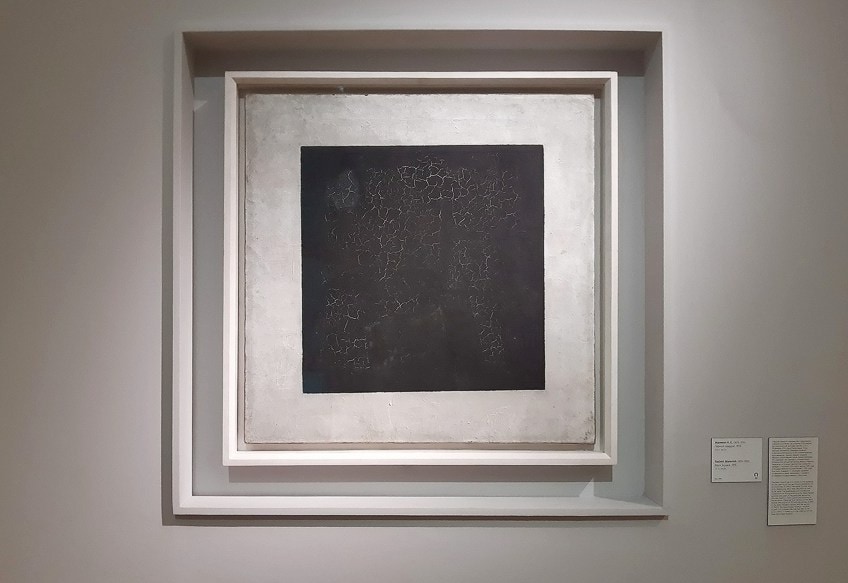
PIET MONDRIAN: COMPOSITION WITH YELLOW, BLUE, AND RED, 1942
Third on the list is the Dutch artist Piet Mondrian, whose impact on abstract art and Modernism is truly undeniable. He was among the most famous abstract artists during the movement’s peak. He was also a significant innovator of the art form. Mondrian grew up learning how to draw as his father was a painter. However, the Dutch artist only began to pursue painting with serious intent as an adult. He embraced Abstract Art after WWI and became notable for his unique grid style. Initially, Mondrian experimented with Figurative art styles. But he quickly transitioned into abstraction as he began to utilise solid geometric shapes with primary colours in his artworks, calling it Neoplasticism.
Mondrian headed the Neoplasticism movement, also known as the “De Stijl” movement. It embraced pure abstraction over any other art form. Other artists who adhered to this abstract movement used only geometric shapes, straight lines, and three primary colours. As the movement gained popularity, Mondrian became well-known for his simplified form and tone within his artworks. His iconic work made him a significant leader in the progression of Abstract Art.
Mondrian’s work became known by the three primary colours used in each painting. For instance, his most notable works include Broadway Boogie Woogie from 1942-43, Composition with Red, Yellow, and Blue from 1937-42, and Composition II in Red, Blue, and Yellow from 1930.
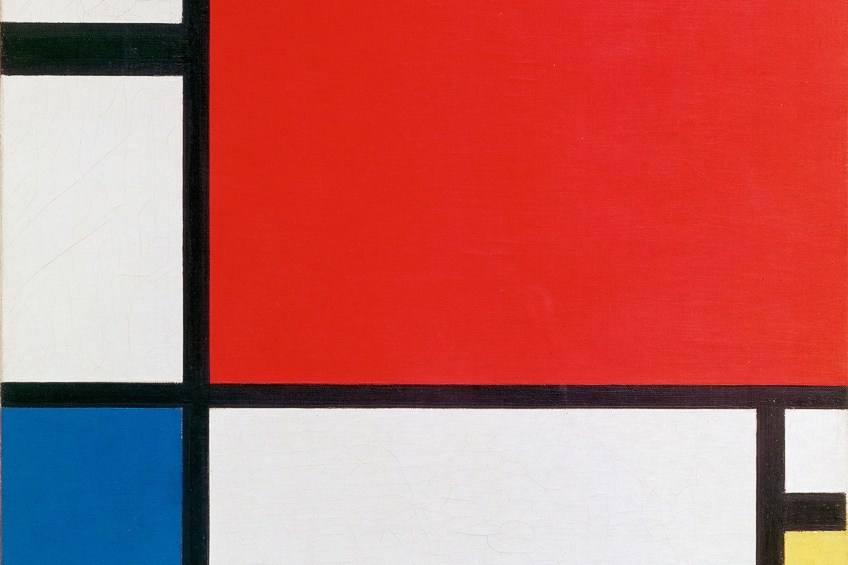
WILLEM DE KOONING: WOMAN I, 1950-52
The Dutch-American artist Willem De Kooning was one of the most well-known Abstract Expressionists who developed a distinctively American painting style. At 22, De Kooning arrived in New York City after travelling as a stowaway on a boat. He joined the Artists Union in 1934 and began painting murals, but had to step away from this project as he was not a lawful citizen. After his citizenship, De Kooning opened his art studio, where he worked until his last breath.
De Kooning’s earlier paintings chiefly consisted of female figures, portrayed using geometric and abstract elements. It was only later in his career that he switched to more non-representational imagery within his artworks. Despite De Kooning embracing the popular image of the masculine, boozy artist, he approached art with gentle and careful thought. He was one of the most intelligent artists associated with the New York School. His paintings differed from most of his colleagues, as he continued to refer to the human form through his abstractions. He favoured depicting the woman figure, emphasising his unique combination of gestural abstraction and figuration. De Kooning was also highly influenced by Pablo Picasso’s Cubist artworks. Thus, he experimented with ambiguous blendings of figures and ground within his paintings, leading him to dismember, reassemble, and distort his figures.
De Kooning experimented with his artworks by distorting his figure paintings. His fascination with this style allowed him to continue showing human figures in his abstract paintings. You can see this representation of figures in some of his most notable works, such as Woman I from 1952, Woman III from 1953, and Interchange from 1955.
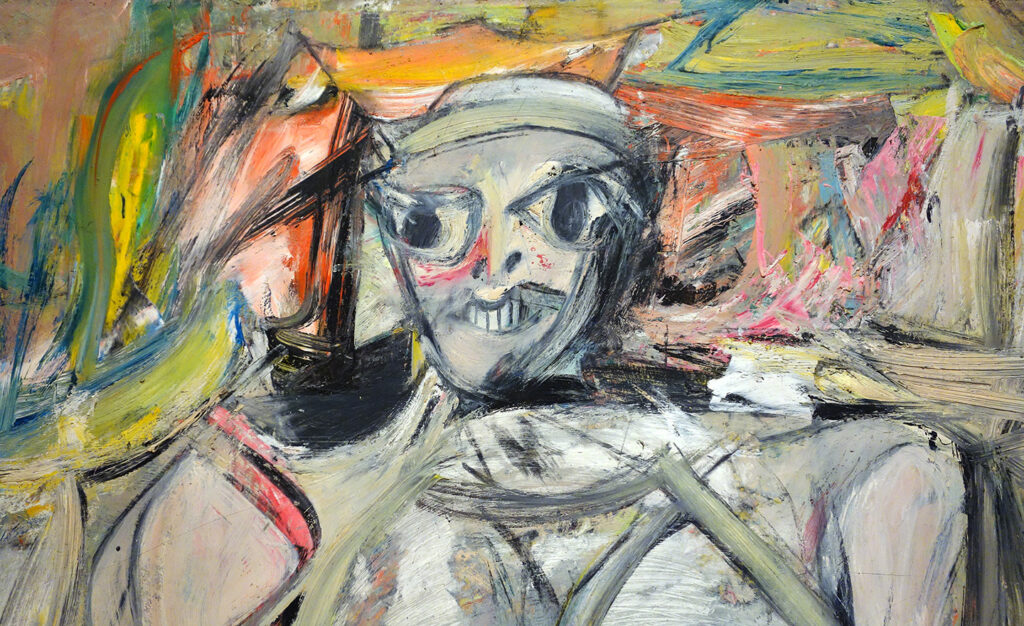
MARK ROTHKO: NO.61, RUST AND BLUE, 1953
The Latvian-Russian-American artist Mark Rothko competes with fellow artists Willem de Kooning and many others for the title of the most celebrated Abstract Expressionist of all time. Known as a member of the Colour Field Painting, Rothko painted over his entire canvas instead of addressing certain areas with gestural marks when creating his artworks.
Rothko immigrated to the United States when he was a young child. He initially went to Yale for several years before dropping out, believing the institution was pretentious and racist. Later, Rothko moved to New York and began to paint. He went through several diverse painting styles during his artistic career, including Surrealism. All this journey led to the emergence of Colour Field Painting, with Rothko being the pioneer. In contrast, Rothko created visual vibrations with his colour choice, making the blocks appear to hover above the canvas. And by translating different moods into his paintings, he achieved an emotional response that elicited varying reactions from viewers.
Rothko focused on creating a magnificent type of geometric abstraction, juxtaposing blocks of pure colours connecting one another within his paintings. For example, he would depict large blobs of pigment bordering one another to create a comparison between the colours. This style can be seen in the majority of his Abstract artworks from that period, such as No.61 Rust and Blue from 1953, No. 10 from 1950, No. 21 (Red, brown, black, and orange) from 1951, Orange, Red, Yellow from 1960, and Untitled (Black on Gray) from 1970.
